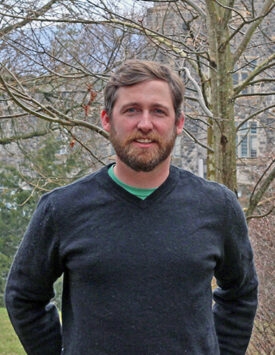Zach Martin
IGC FELLOW | Global Change Center
Ph.D. Student • Fish and Wildlife Conservation
Research Interests: Stream habitat management, landscape ecology, reproductive biology of fishes, watershed modeling, spatial modeling
Advisor: Dr. Paul Angermeier
zpmartin@vt.edu

Zach attended University of North Carolina Wilmington where he received a B.S. in Marine Biology. While working in the UNCW Fisheries Ecology Lab, he realized he wanted to build a career studying fish while having an impact on water and land management. In the summer of 2009, Zach moved to Gainesville, FL to gain experience. He first worked in the UF Florida Rivers Lab, surveying fish and plant communities in the Homasassa and Chassahowitzka Rivers; he also tracked American shad and mapped their spawning habitat in the St. John’s River. Additional part-time work with the Florida Museum of Natural History led to his master’s research with Dr. Larry Page, Curator of Ichthyology. Zach gained an invaluable background in systematics while working on my M.S. degree, and it continues to guide his research interests in life-history and trait evolution.
Further work experience confirmed these interests. While finishing up his degree at UF, Zach worked for the USGS-Southeast Ecological Science Center. He surveyed fish and mussel communities in the Apalachicola-Chattahoochee-Flint River basin, and used that data to model species persistence and diversity in the face of altered hydrology (e.g. reduced flows from agricultural and municipal pressure).
As an IGC Fellow, Zach is conducting research on the influence of varied land use on abiotic (e.g., sediment loading, benthic habitat condition) and biotic (e.g., species occurrence, recruitment, and density) stream dynamics. Additionally, he’s incorporating a life-history trait framework into predicting species responses to landscape- and stream reach-level characteristics. Although his primary focus will be on the Roanoke, Dan and Tar Rivers, his research includes field surveys and occupancy modeling exercises that can be transferred to any watershed. Results will contribute to the management of imperiled species (e.g., Roanoke logperch, James spinymussel) and land/water resources.






